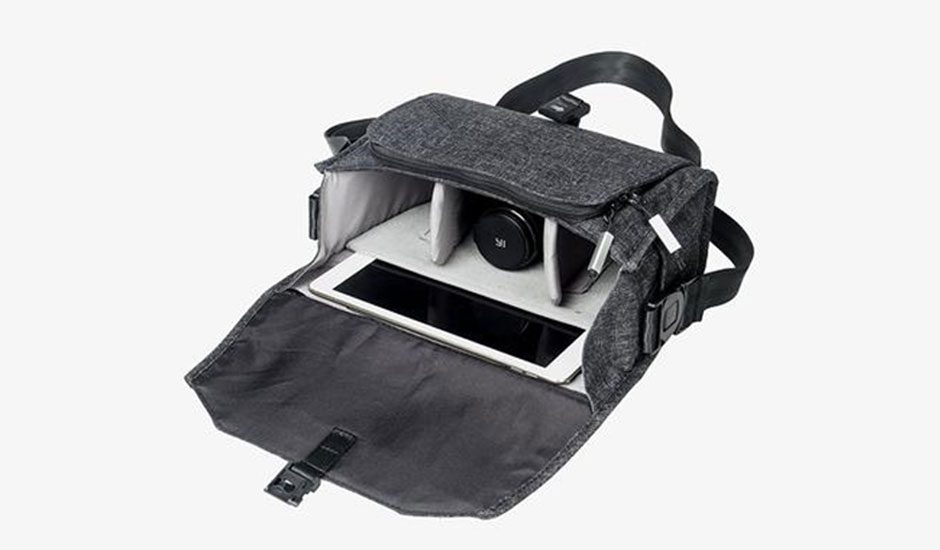Getting a new DSLR or a mirrorless camera is only the first step to becoming a photography enthusiast.
While your standard camera body and kit lens combo can jumpstart your journey as an avid photographer, you will eventually need to get some new gear to boost your picture-taking even further.
To help you get started on building the ultimate photography toolkit, here are 7 essential camera accessories you need to consider:
Table of Contents
1. Fast prime lens
Aside from the kit lens, the fast prime is one of the first lenses you should get. While kit lenses are good enough to adapt to a variety of everyday situations, a nice 50mm prime lens can get you sharper photos in trickier scenarios like indoors or at night. Get one with a wide maximum aperture as well. Remember, a wider aperture means faster shutter speeds, and this usually equates to sharper photos.

Why a 50mm lens? A 50mm lens closely resembles a human’s field of vision, so it’s great when you’re just starting out. Even veteran photographers still consider their 50mm lenses an essential part of their gear.
2. Sturdy camera bag
DSLRs and mirrorless cameras (and their accessories) are expensive, so protecting them from harsh environments and accidents is a must. After securing yourself a new camera, be sure to spare some cash for a decent camera bag as well. There are tons of well-known and highly trusted camera bag manufacturers out there, so make sure to do your research.


You want a bag that’s well-padded to protect your equipment, discreet enough to avoid catching the eyes of thieves, and roomy enough to house all your lenses and other knickknacks.
3. Tripod
No matter how steady your hand is, there will always be a situation where a tripod is required. Getting the perfect angle for your long exposure shot, taking a group photo in front of a popular landmark, and working on a night shoot are just some examples of instances where a tripod is necessary.
Don’t settle for cheap tripods that were made for point-and-shoot cameras either. Get a sturdy tripod that is sure to withstand the weight of your gear every time. As for material, carbon fiber tripods are known to be strong and lightweight.
4. Speedy memory cards
With newer technology come crisp, crystal-clear photos. But this boost in image quality is accompanied by larger file sizes as well. This means that sluggish memory cards will take longer to save your photo, which could result in you missing an important shot because your previous photo hasn’t finished saving. To avoid this awful scenario, make sure that you get memory cards with fast write speeds. If your camera uses SD cards, make sure to get at least a Class 10 SDHC or SDXC card.
5. External hard drive
As mentioned previously, high-resolution images take up space. A lot of space, in fact. So a big storage space is needed if you want to keep as many of your amazing photos as possible or if you plan on keeping all your RAW files. An external hard drive can act as both storage and backup, especially if you’re storing your photos in your computer as well.
What’s great is that external hard drives are getting bigger (in terms of storage capacity), smaller (in terms of physical size), and cheaper (you can take that literally). So you don’t have to spend a lot of money to get a 1TB or 2TB hard drive.
6. Remote shutter release
For long exposure shots, a remote release is especially helpful. With a remote shutter release, you can take shots without subjecting your equipment to the dreaded camera shake. Some newer cameras have built apps with a remote shutter release functionality, but if yours doesn’t come with one, you can always buy a separate accessory.
7. Spare battery
One of the most annoying things to happen to any photographer on a mission to take amazing photos is for their equipment to run out of juice. When it comes to photography, it’s always better to be prepared.
Spare batteries don’t cost much, especially if you’re willing to take a risk on OEM ones, and they can definitely save you a lot of hassle during long shoots. If you’ve got the money to spend, buy an original battery from your camera’s manufacturer. You can always try generic batteries if you want to save a bit. Be sure to only get ones from reliable suppliers, though!
The camera accessories mentioned above cover just the tip of the iceberg when it comes to photography gear. As you go further along your journey, you’ll definitely want and need other types of accessories like pro lenses, lens filters, lens hoods, reflectors, and so on. All these accessories will definitely cost you quite a sum, so it’s always advisable to do your research to ensure that you’re getting the right gear and the best bang for your buck.




